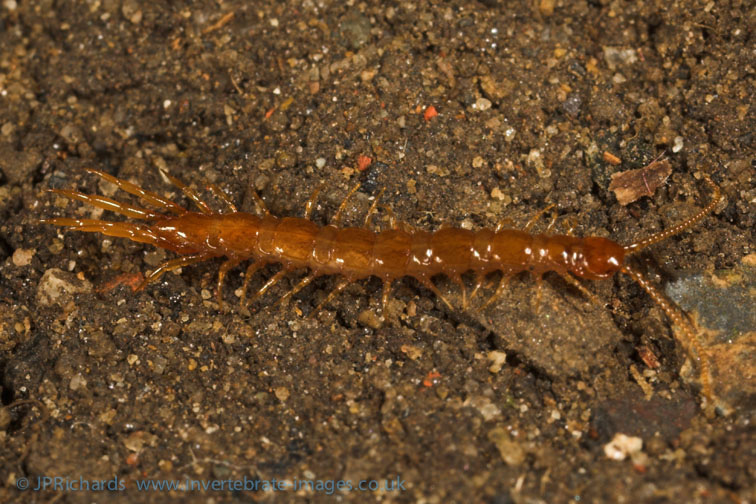Lithobius microps Meinert, 1868
Synonyms
- Lithobius (Sigibius) microps Meinert, 1868
- Lithobius duboscqui Brolemann, 1896
Status:
GB IUCN status: Least Concern
ID Difficulty
Identification
Lithobius is a difficult genus and at least 17 species are known from Britain and Ireland.
Lithobius microps one of the 'smaller species' with 2 + 2 forcipular teeth that lack backward projections on tergites 9, 11 and 13. It is a small chestnut brown species (to 9 mm), distinguished by having three ommatidia on either side of the head (all other Lithobius have 6 or more ommatidia). The antennae typically have about 23 articles.
More information to allow accurate identification is given in the published identification keys by Tony Barber (2008 & 2009).
Distribution
Lithobius microps is very common in England and Wales (and probably Ireland), but becomes increasingly scarce further north with very few records in northern Scotland.
Habitat
In the south it is ubiquitous, both inland and on the coast; woodland, grassland, wetlands, sand dunes, churchyards, gardens, etc. Further north it but becomes increasingly restricted to sites with human activity, such as gardens and churchyards.
It is typically found under stones and dead wood, among leaf-litter, etc.
This account is based on the 'Centipede Atlas' (Barber, 2022).
Links
ChiloBase 2.0 - World Catalogue of Centipedes: https://chilobase.biologia.unipd.it/searches/result_species/2152




